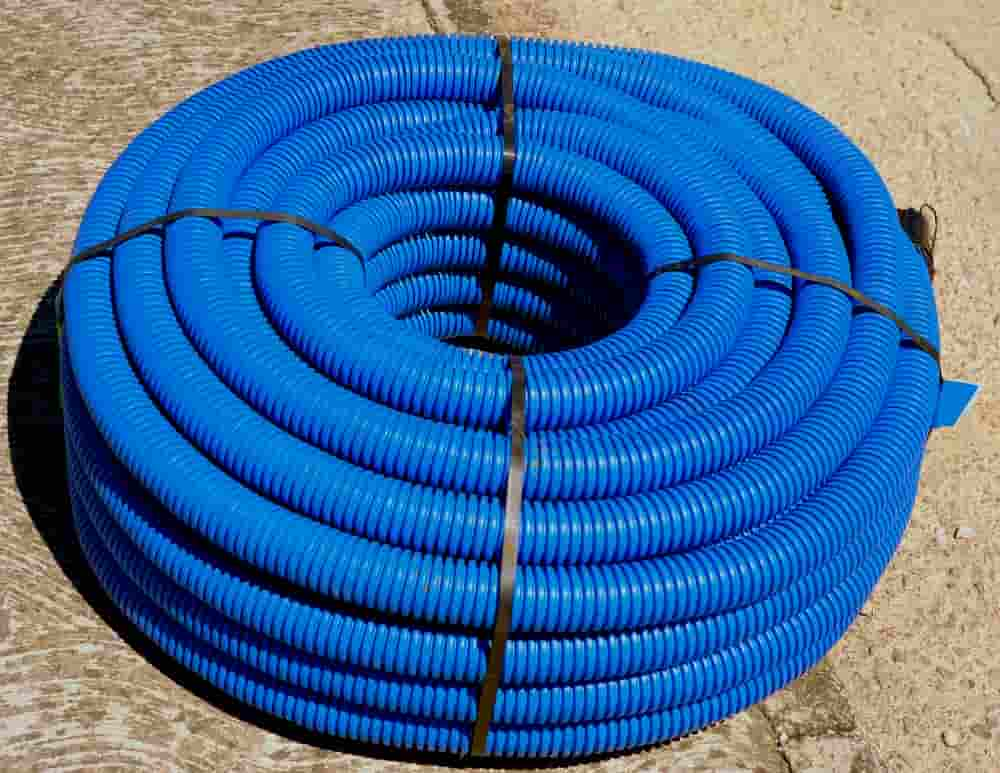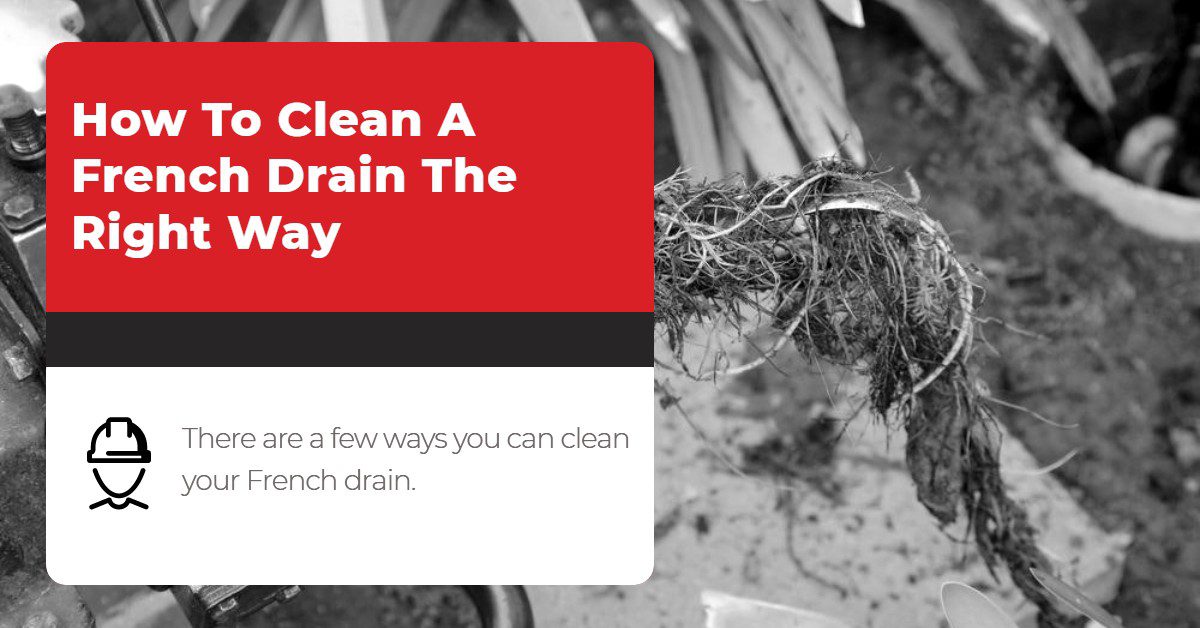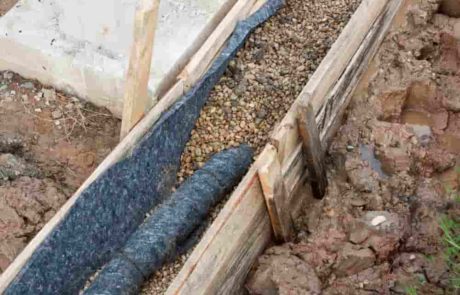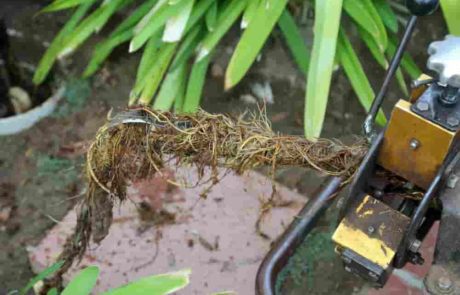If you want to know how to clean a French drain the right way, we’ve got the article for you. Here you’ll learn how you can clean/maintain a French drain, what French drains are for, and how to tell if your French drain is working.
What Are French Drains?
French drains are usually placed in areas of your yard prone to pooling water. If you live below a hill, water could be draining toward your home. So, the best solution is to divert that incoming water to another part of your property away from your home. Otherwise, water can absorb into the soil around your foundation and cause problems such as water seepage, bowing basement walls, or structural cracks. Other problems might include dead grass, pest infestations, and more.
How To Clean A French Drain The Right Way
There are a few ways you can clean your French drain.
- Rent an electric sewer snake – If you rent a motor-powered sewer snake, you can most likely clear out any debris built up in your French drain. All you have to do is feed the cable into your drain until you feel resistance. Once you reach the clog, retract the cable and free the cutter. Either the cable will find its way around the clog, or it will cut through it. Repeat the process until you’ve pulled out most of the clog.
- Use a hose – After snaking your French drain, feed a garden hose into the drain and turn it on. For the best results, feed the hose into the drain at the same time as the sewer snake.
- Call a professional – If you can’t clear the clog yourself, or you don’t want to risk damaging your French drain, we recommend calling in a professional. They’ll most likely use hydro-jetting to flush out the clog. Hydro-jetting is when up to 4,000 PSI of water is shot into your French drain. Only professionals should handle hydro-jetting equipment because sometimes, your French drain may be too weak to handle the pressure.
How To Maintain A French Drain
Here are a few things you should know about maintaining a French drain.
- Inspections – French drains can clog up with debris over time. If you want to make sure your clogs never get too big, schedule a CCTV video inspection to investigate the integrity of your French drain.
- Placement – French drains are placed right underneath your grass. You should never park your car or drive heavy machinery on top of them. If you want, add small marker flags near your French drain so that you can easily see where it’s located.
- Replacement – If groundwater conditions change or your area experiences heavy flooding, you might want to install additional French drains or replace the one you have with a larger pipe.
How to Tell If Your French Drain Is Working
The easiest way to determine if your French drain is working is by looking at your lawn. If water is pooling on your property near your French drain’s location, chances are it’s not working properly.
When water seeps through the soil and into your French drain, it often brings along sediment (small rocks and hard dirt). Over time, the sediment can build up and turn into large clogs. This can slow or stop the water flow completely.
Another way of telling if your French drain is working is by calling in the professional who built it or another foundation waterproofing expert.

How Much Do French Drains Cost?
The average cost of a French drain depends on where it’s located. French drains placed inside your basement or outside your foundation walls (also called drain tile systems) usually cost around $0.50 to $3 per linear foot. You could be looking to spend around $500 all the way to $18,000. It’s all based on how much pipe is needed, where it’s located, and how much work is needed to install it. Here are some key factors that make up the price for French drains.
- Labor – How much work is needed to install your French drain?
- Permits – What kind of permits are needed to begin working?
- Type and materials – Sometimes, different cities require different material types.
- Location – Where is your French drain being installed?
- Size, length, and depth – How much pipe is needed, and how far down do builders need to dig to install it?
- Inspection – Some cities require an inspection before the French drain is covered with soil, gravel, or concrete.
- Soil content – The kind of soil on your property will affect how hard it is to install your French drain.
- Irrigation ditch or dry well – Do experts need to build an irrigation ditch to dispose of collected water?
- Sump pump – French drains placed inside your basement (drain tile systems) require a sump pump to eject collected water out of your home.
Who Can Clean Or Install French Drains Near Me?
If you need to clean or install a French drain, call Foundation Professionals Of Florida. We service Florida, Georgia, Alabama, Mississippi, Louisiana, Tennessee, Kentucky, North Carolina, South Carolina, Virgin Islands, and the Florida Keys. We also provide foundation repair, basement waterproofing, concrete leveling, and more.



